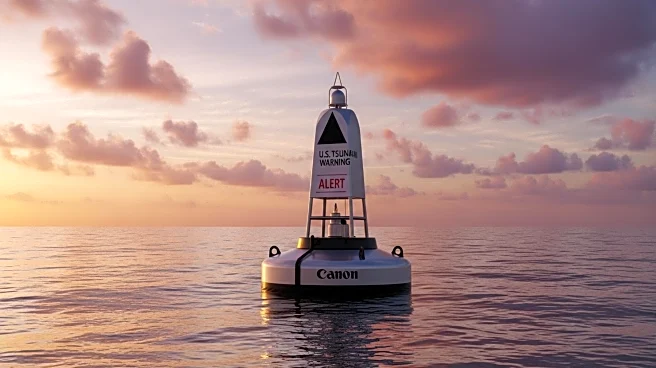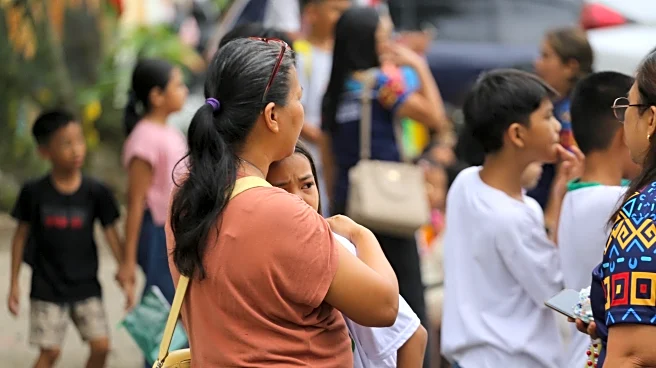What's Happening?
A 7.4-magnitude earthquake struck near the southern Philippines, with its epicenter off the coast of Mindanao. The quake triggered tsunami warnings for nearby regions, including Indonesia and Palau, which were later lifted. The earthquake caused damage to transmission lines and led to the suspension of classes in Davao City for infrastructure assessments. Two deaths were confirmed in Davao Oriental province. President Ferdinand Marcos Jr. assured the public of ongoing government efforts to assess and address the situation. The Philippines, located on the Ring of Fire, frequently experiences seismic activity, posing challenges to infrastructure and public safety.
Why It's Important?
The earthquake underscores the Philippines' vulnerability to natural disasters, impacting infrastructure, public safety, and daily life. The government's response, including evacuation orders and damage assessments, is crucial in mitigating risks and ensuring community safety. The event highlights the need for improved disaster preparedness and infrastructure resilience in seismically active regions. The earthquake's impact on local communities may influence international aid and support, as well as policy discussions on disaster management and infrastructure development.
What's Next?
Authorities are expected to continue infrastructure assessments and repair efforts, particularly in affected areas like Davao City. The government may implement additional safety measures and infrastructure improvements to better withstand future seismic events. International aid and support could be mobilized to assist in recovery efforts. The event may also prompt discussions on enhancing disaster preparedness and response strategies in the Philippines, potentially influencing policy changes and resource allocation.
Beyond the Headlines
The earthquake may have long-term implications for the Philippines' infrastructure resilience and disaster management policies. It could lead to increased investment in earthquake-resistant construction and technology, as well as heightened awareness and education on disaster preparedness among the population. The event may also affect tourism and economic activities in the region, as safety concerns and infrastructure damage could deter visitors and impact local businesses.












